The day unrolled slowly. I woke sore from all the miles and dams of day one. Adam had brought firewood down to the camp the night before, and I gratefully started what I knew would be my only fire of this trip. As Adam came down to say goodbye, a red-tailed hawk swooped through the clearing above our heads. It felt like an invitation to the day and an urging to get back out on the water.
The water was not as murky as the day previous, but the silt was still stirred up enough to not see the bottom. I was blessed early on with a visit from an otter, and while I didn’t see many things in bloom, I did get to witness tons of types of greenery. This stretch of the river would take me past some pretty populated places as I wound my way through Hoover. However, I didn’t actually encounter anyone, which surprised me. Now, that’s not to say I was totally isolated. Not at all. Every single day out on the river brought regular reminders that humans exist and were *VERY* close. Lawnmowers, airplanes, trains, trash, interstates, etc. The noise pollution alone was ever present. There wasn’t a day I didn’t hear ATVs ripping across the landscape. In some ways this is a comfort knowing one cannot truly get lost out there, but in many ways, it’s sad how we’re erasing our wild spaces.
This day also brought into sharp focus a lot of the ways in which certain human practices harm the river. The Cahaba faces two huge threats (among several others). The first issue deals with bank erosion and water run-off. Every time it rains, water isn’t absorbed into the ground quick enough and runs off into the river carrying harmful toxins with it and spiking E.coli levels. This surge of water also quickly erodes the river’s banks and sweeps sediment into the water. Silt suffocates bottom-living filter-feeders (like mussels) which in turn affects the water quality. We have this awesome, crystal-clear river most of the time, but when it rains heavily the river turns into a dark and swollen churning mass of sediment.
Look here at this bank erosion:
This affects you directly because most of us in the area get our drinking water from the Cahaba. The more it’s dirtied up, the more we have to pay to treat it. It also affects the safety and recreation of the river. I spent a huge portion of my time this day (and really the whole trip) dodging downed trees. Rushing water causes bank instability and trees, left with nothing to sink their roots into, just fold on into the water further damaging the banks and increasing paddling hazards.
Taro is the other big threat to the Cahaba. Wild Taro (Colocasia esculenta) you probably know as Elephant ear. It’s a common plant used in landscaping as its large leaves are an elegant choice for gardeners. However, the species is a non-native one and terribly invasive. Those broad leaves choke out sunlight from native plants while the roots emit toxins into the soil. All it takes is small bits and chunks from Taro washed downstream to establish a new colony. And once that happens, the plant explodes with growth. This is a particular threat to the Cahaba Lily and its accompanying plant the American Water Willow. Pictured below is a fresh spot of Taro rooting itself among the Cahaba Lilies and Water Willow below the second dam my first day on the water.
The Cahaba Lily ALREADY has incredibly sensitive needs. The presence and spread of Taro threatens to wreak havoc on the native species of the river, and I saw so much of it on this stretch. If you spot Taro on the Cahaba, you can report it here. And please, if you must throw out clippings of your Taro plants, don’t throw them in the river or put them anywhere where they can wash into storm drains. Even the smallest chunk can go on to take hold along the banks of the Cahaba. Instead, sack them up and throw them away so they go to the landfill.
As the day progressed, I felt my anxiety increase as I thought about choosing a camp spot for the evening. I’d never been on this stretch of river before and had no clue what it had to offer me by the way of a safe place to spend the night. What if I passed up a perfect place earlier in the day only to be caught with the sun going down and no suitable place to lay my head? If worst came to worst, I could always tie off my kayak to the bank and scrunch down in the cockpit for the night, right?
I helped calm these fears by seeing how many suitable camp spots I was passing. If they were frequent enough, then I would know I could expect there to be more places ahead, and I’d be less fearful of passing up a good spot. This practice allowed me to be attentive to the river in a way I had never been before. There’s a difference between observing a thing and having a reason to notice something specific about a thing.
In the end though, I decided I would try and wrap up my day around 4 pm just to be on the safe side so I wouldn’t be pitching camp in the dark and could enjoy the golden hour. And sure enough, right around 4, I found myself looking for a sign—something that would show me I was meant to spend the night in a particular spot. I rounded a corner and there was a nice little island tucked away on the right bank of the river. The runnel of water off to its right-side was wide enough and the bank high enough I thought it might deter both human and hog. The sun slanted through the trees in such a way that it caused the whole place to glow with a warm essence. I got out to scout the island. Satellite maps showed ATV trails but no other signs of potential people. Fresh tracks, paths, and wear patterns indicated this place was a bed-down for deer. And, well, if it’s good enough for deer, it’s good enough for me. So, I set to making camp, this time opting to pitch my hammock/tent combo directly on the rocks.
I followed the package directions for my dinner of boil-and-serve mac-n-cheese, but the whole thing came out like cheese noodle soup. Which made me real glad I also packed some freeze-dried cookie dough as a treat. I sat there and ate, read some poetry by my friend Carson Colenbaugh, and listened to 4-wheelers blare music up and down the paths close by. And as the light slipped away, the frogs started up their calls. They were so loud they almost down out the sounds of the partiers. By 7:30 the light was almost all gone, and I laid down to rest. No sooner had my head hit the pillow than I heard a huge splash and something large swimming my way. The deer were coming to the island. I sat very still. I hadn’t put the fly on my tent so all that was between me and them was mosquito netting, and I didn’t want to scare them off. While I never did see them what with the dark and lying still, I could hear them stepping all through camp as they eventually made their way up the embankment to their bed-down. Each time a deer entered the water to cross to our island, the frogs would increase the sounds of their calls, welcoming them. It was the strangest and coolest thing. I fell asleep under sycamore, river birch, and the soft burn of fireflies while off in the near-distance, a train rumbled over a trestle.
Launch: 9:45 am
CFS: 300 at Hoover
Water Height: 4.5
Water temp: 69 degrees
Miles traveled: 17.4
Total Miles: 36.2
Take out time: 4:22 pm
One last thing before I leave you until my next post, my photo essay with the Alabama the Beautiful magazine dropped and the whole issue is a beauty. If you’re itching for more Cahaba content alongside some photos you haven’t seen before, check it out. It’s free and online, and you should absolutely subscribe so you can get more of the beauty of Alabama delivered right to your inbox.
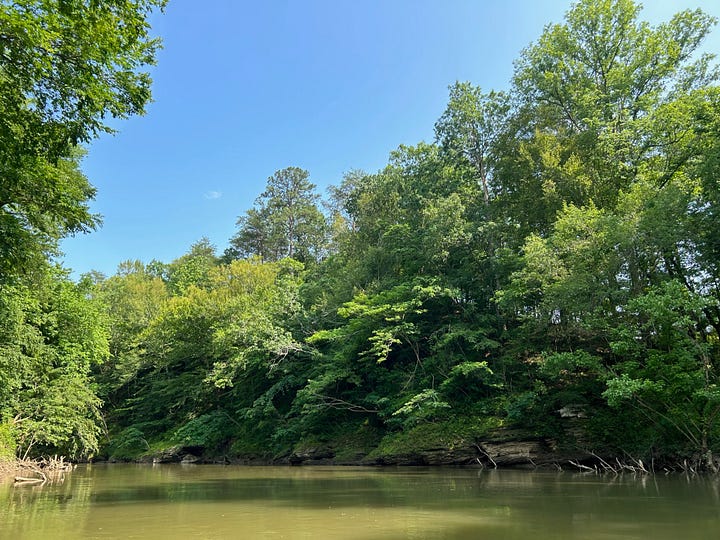
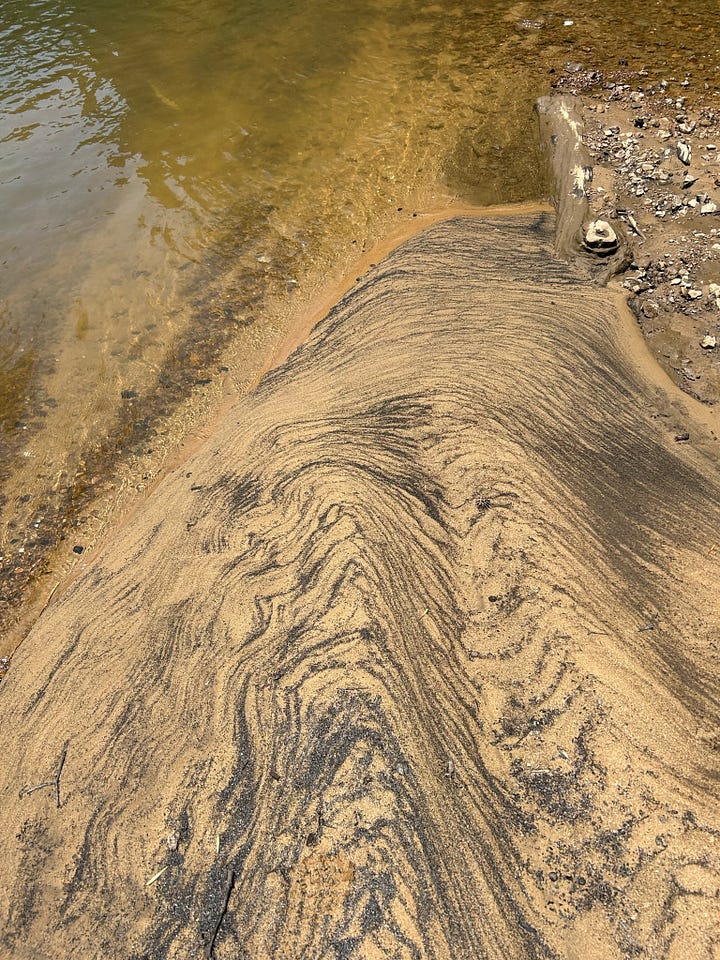
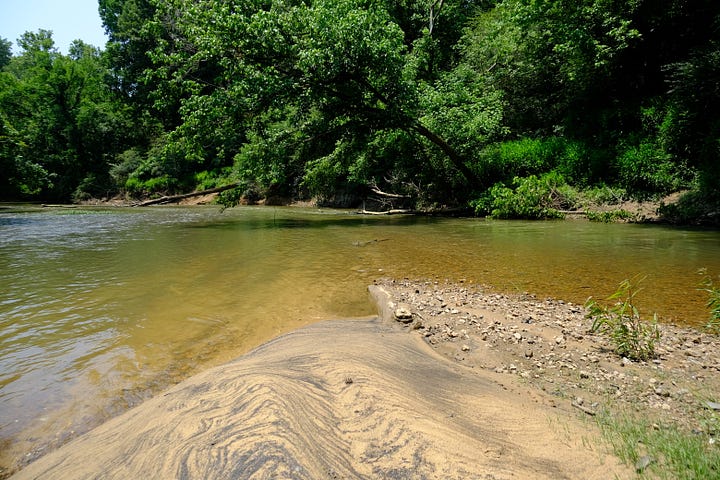
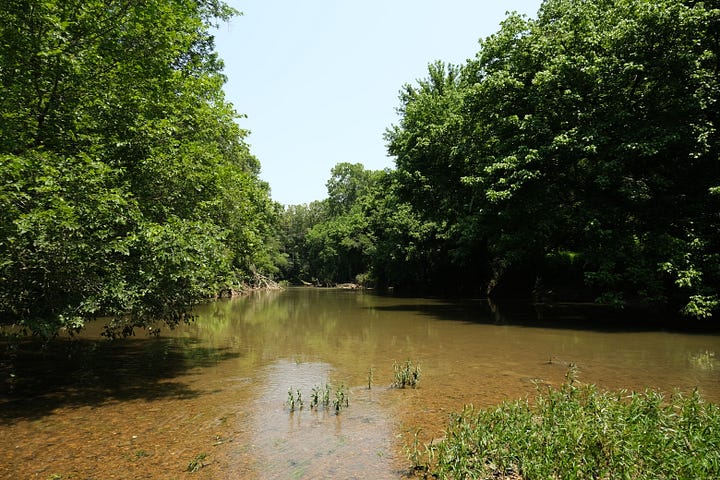




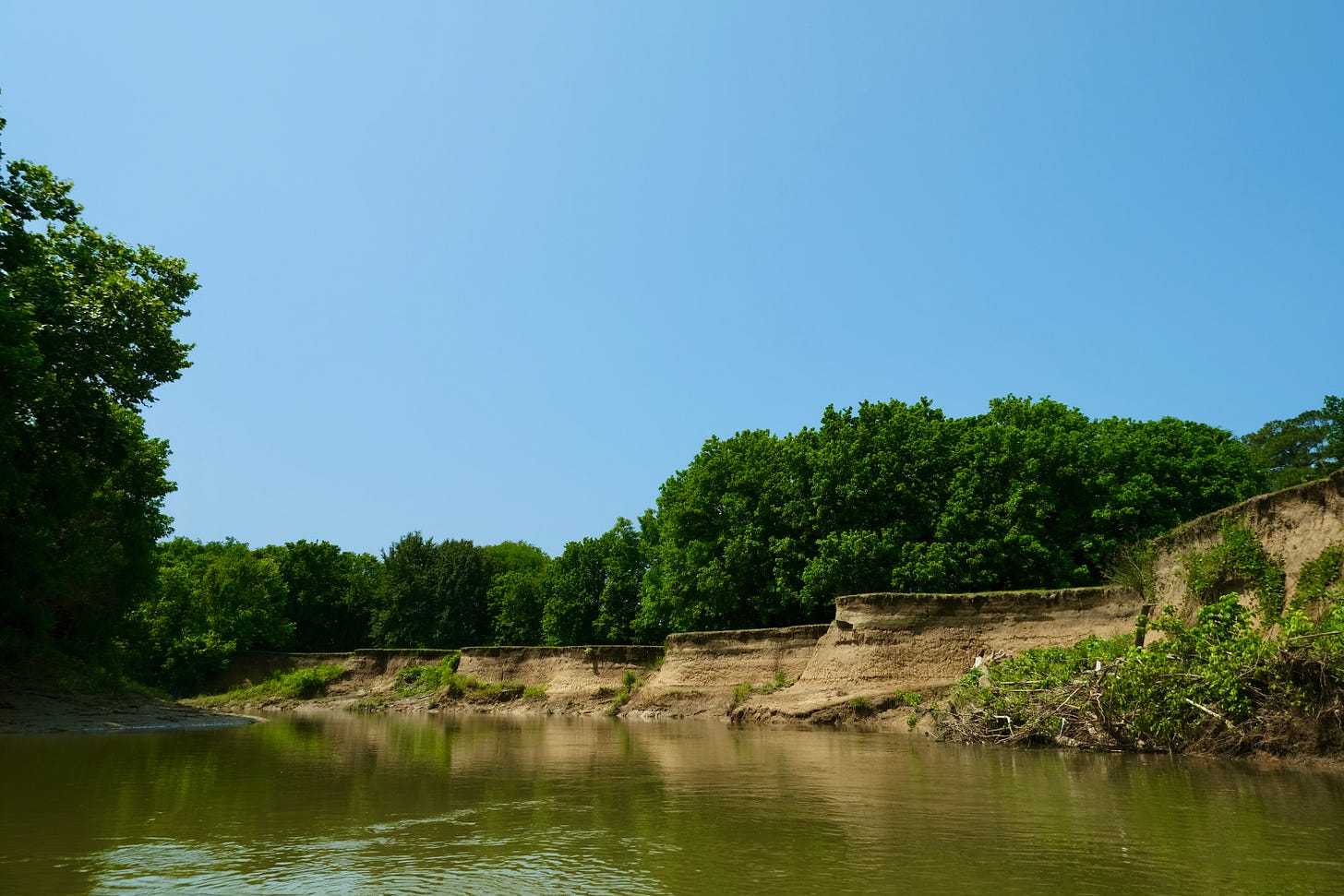
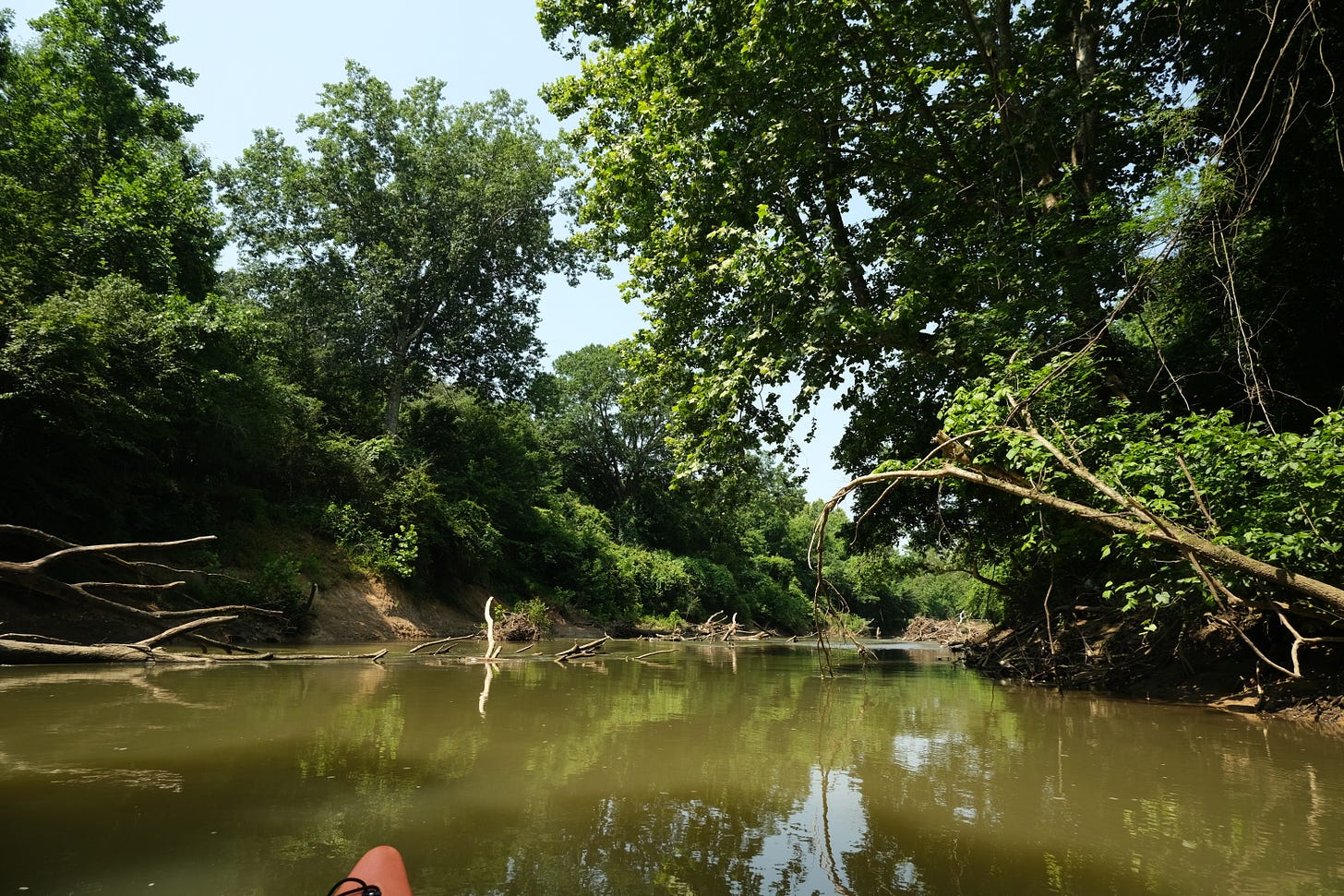
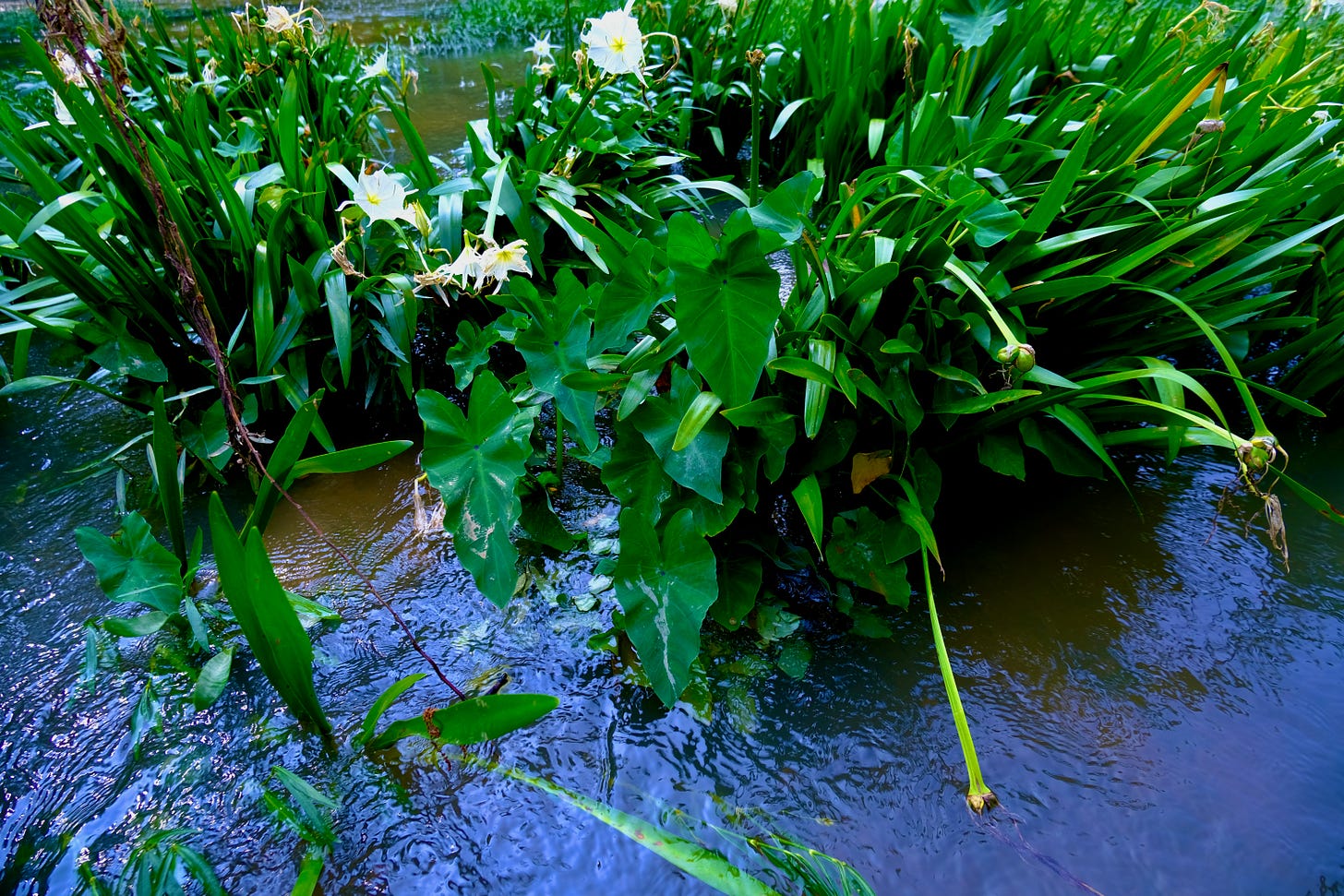
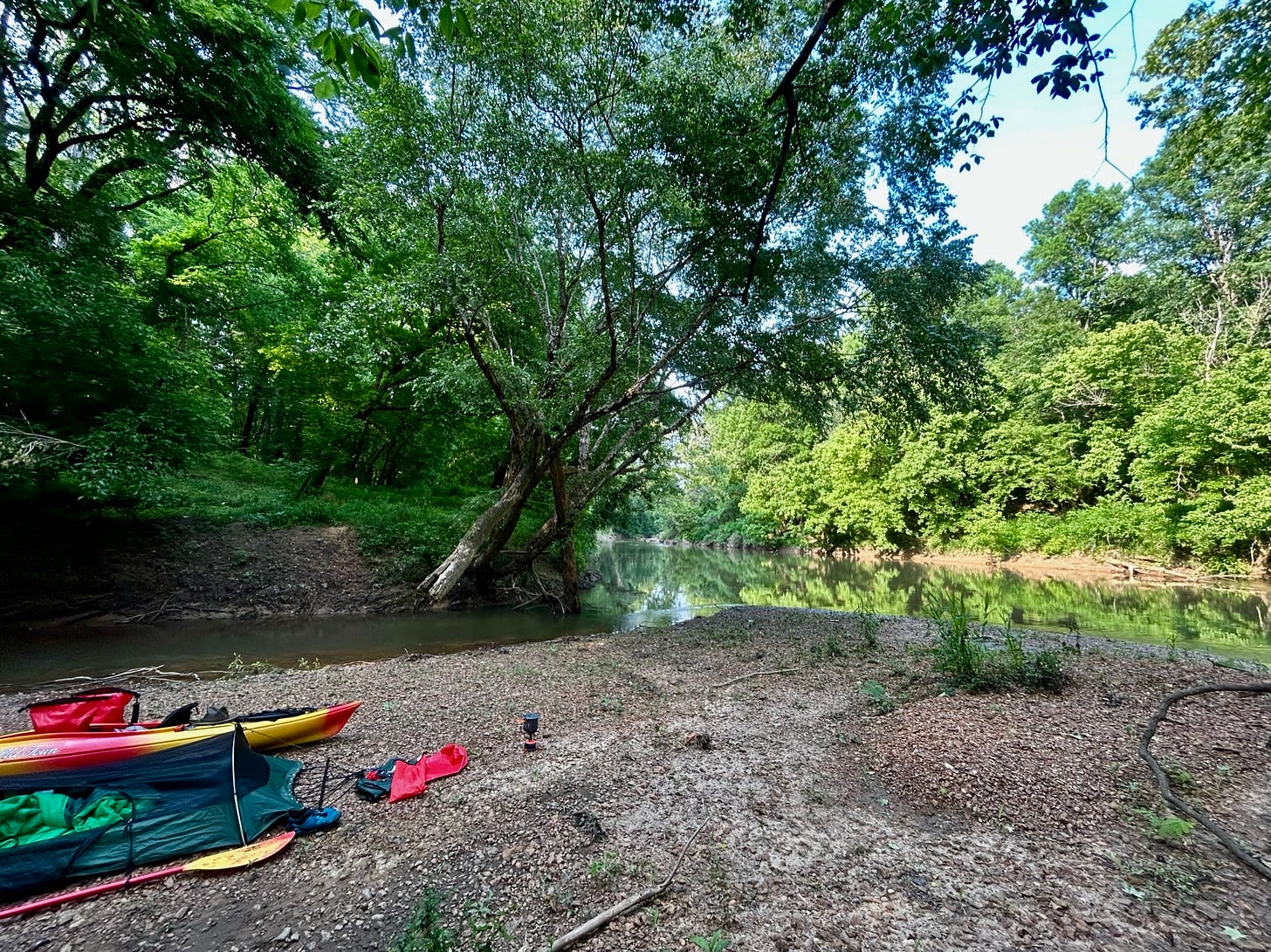
What a magical experience with the deer and the frogs. Love that you said "our island." Will be checking out the photo essay!
From the otter to the deer and frogs, lovely.